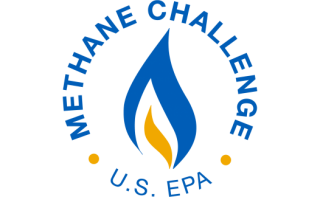National Fuel Gas Midstream Co, LLC Methane Challenge Partner Profile

Methane Challenge Partner (2018 - 2024)
National Fuel Gas Midstream Co, LLC has committed to apply best management practices (BMPs) across its operations to mitigate methane emissions from the emission sources listed below.
Learn more about National Fuel Gas Midstream Co, LLC's progress towards meeting its commitments to implement methane-reducing technologies and practices related to these emission sources:
- Pneumatic Controllers (Gathering and Boosting)
- Reciprocating Compressors - Rod Packing Vent (Gathering and Boosting)
At the bottom of this page, you will also find the methane reductions that National Fuel Gas Midstream Co, LLC has achieved in the program.
Methane Challenge Data: Data submitted by National Fuel Gas Midstream Co, LLC can be found in the Methane Challenge BMP Dataset at the bottom of this page.
Methane Challenge Documents: National Fuel Gas Midstream Co, LLC submitted the following documents as part of its Methane Challenge partnership:
- National Fuel Gas Midstream Co, LLC Methane Challenge Implementation Plan (pdf)
- National Fuel Gas Midstream Co, LLC Methane Challenge Historical Actions Fact Sheet (pdf) (this fact sheet was developed by the company and represents the company's historic efforts to voluntarily reduce methane emissions before joining the Methane Challenge Program)
Gathering and Boosting
Pneumatic Controllers
National Fuel Gas Midstream Co, LLC did not have any high-bleed pneumatic controllers.
Reciprocating Compressors - Rod Packing Vent
| Year | Implementation Rate (%) | Target Rate and Year (%) |
|---|---|---|
| 2019 | 100 | 100 |
| 2020 | 100 | -1 |
| 2021 | 98.78 | -1 |
| 2022 | 100 | -1 |
| Commitment Details | Company Selection |
|---|---|
| Segment: | Gathering and Boosting |
| Target Year: | 2019 |
| Target Implementation Rate: | 100% |
| Current Implementation Rate: | 100% |
Graph shows: The blue bars show the percentage of compressors to which National Fuel Gas Midstream Co, LLC has applied a BMP in a given year. The green star indicates its 2019 target annual rate (100%). National Fuel Gas Midstream Co, LLC has implemented this commitment by replacing the rod packing in its reciprocating compressors at least every three years or every 26,000 hours of operation.
Methane Reductions
| Year | Methane Reductions (MTCO2eq) |
|---|---|
| 2019 | 4732.56 |
| 2020 | 7732.76 |
| 2021 | 14783.72 |
| 2022 | 17101 |
Since joining the Methane Challenge program, National Fuel Gas Midstream Co, LLC has achieved the following methane emissions reductions, which are also expressed in terms of carbon dioxide equivalents and the value of the amount of natural gas saved:
- Methane emissions reductions: 1,584 metric tons
- Reductions in carbon dioxide equivalents: 44,350 metric tons
- Natural gas savings: $577,474*
*Natural gas savings assumes a natural gas price of $7.00 per thousand cubic feet, based on the average of daily Henry Hub Natural Gas Spot Prices in 2022, rounded to the nearest dollar
Methane Challenge Program – BMP Dataset
The Methane Challenge dataset for the BMP Commitment Option can be downloaded below.
Please refer to the Methane Challenge BMP Data Dictionary for assistance in using the BMP data download spreadsheet.
Methane Challenge Accomplishments Calculation Methods
This document describes how EPA analyzes Partner-submitted data to calculate Methane Challenge program ‘accomplishments’; specifically, the partner commitment progress metrics shown on each Partner Profile webpage as well as Methane Challenge program-level methane reductions.
Methane Challenge Accomplishments Calculation Methods (pdf)
This document does not describe how Methane Challenge Partners calculate the data they report to EPA. Those calculation methods are detailed in the Methane Challenge Technical Documents.
Pursuant to 5 CFR § 2635.702(c)(2), names are displayed here as the result of recognition for achievement given under an agency program of recognition for accomplishment in support of the agency’s mission. Any reference to a specific company or commercial product or service by trade name, trademark, manufacturer, company, or otherwise does not constitute or imply the endorsement or recommendation of EPA.
About the Methane Challenge Program

The Methane Challenge Program provides a new mechanism through which U.S. oil and gas companies can make more specific and transparent commitments to reducing methane emissions. Partner companies choose between two commitment options to cost-effectively reduce methane emissions. For background information on the Methane Challenge program, please check out the Methane Challenge Program Fact Sheet (pdf) .
Best Management Practice (BMP) Commitment
The BMP Commitment is intended to spur near-term, widespread implementation of methane mitigation activities across the oil and natural gas value chain to address methane emissions from key emitting sources. By committing to address an emission source, the partner is committing to implement a BMP on all such sources in their operations. Progress towards a commitment is generally indicated by the percent of sources to which the partner has implemented a BMP as part of the Methane Challenge. Commitments for a few sources are instead based on achieving a target rate (of equipment replacement or methane emission reductions).
Learn more about the BMP Commitment in the
Methane Challenge Program Best Management Practice Commitment Framework (pdf)
.
ONE Future Emissions Intensity Commitment
The ONE Future Commitment is intended to drive action to achieve segment-specific intensity targets, established through the ONE Future Partnership, which will represent emissions per volume produced or volume of throughput and add up to a 1% or less “leakage rate” along the natural gas value chain by 2025.
Learn more about the ONE Future Emissions Intensity Commitment in the
Methane Challenge Program ONE Future Emissions Intensity Commitment Framework (pdf)
Learn more about the ONE Future Partnership
